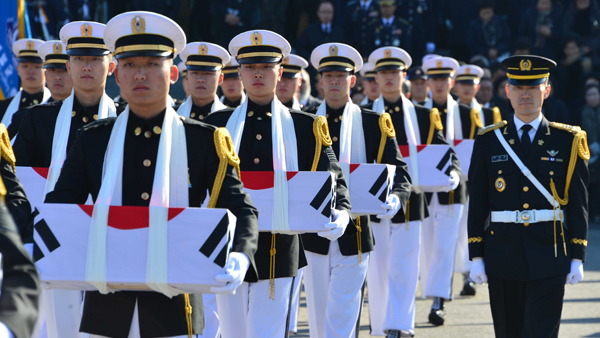Laid to rest

“의장대가 유골함을 운구하고 있는 모습입니다. 기사의 제목은 'Laid to rest 안장'입니다. ‘laid’는 ‘lay’의 과거분사로 ‘눕혀진’을 의미하고 ‘to rest’는 ‘쉬도록’의 뜻으로 매장하는 것을 높여서 일컫는 말입니다. 본문을 통해 내용을 살펴보도록 하겠습니다.”
한 단계씩 따라하다 보면 문장이 저절로 외워지고 영어 구조에 대한 감각이 자연스럽게 생겨난답니다.
Honor guards (yesterday) move urns {containing the remains (of soldiers), {who died (during the 1950-53 Korean War)}}, {to enshrine them (in the Seoul National Cemetery) (in Dongjak District), (southern Seoul)}.
“우선 첫 문장의 뼈대를 살펴보면 주어는 Honor guards(의장대가), 서술어는 move(운구하다), 목적어는 urns(유골함을)입니다.문장의 뼈대를 말해 보도록 하겠습니다.
“Honor guards(의장대가)….move(운구하다)….urns(유골함을)….”

이제 문장의 뼈대에 수식어 부분까지 붙여서 한번에 말해 보도록 하세요.”
The remains have been exhumed (from wartime battlefields).
“두 번째 문장은 ‘이 유해는 전쟁 당시의 전장에서 발굴된 것’이라는 내용입니다.”
Honor guards (yesterday) move urns {containing the remains (of soldiers), {who died (during the 1950-53 Korean War)}}, {to enshrine them (in the Seoul National Cemetery) (in Dongjak District), (southern Seoul)}. The remains have been exhumed (from wartime battlefields).










with the Korea JoongAng Daily
To write comments, please log in to one of the accounts.
Standards Board Policy (0/250자)